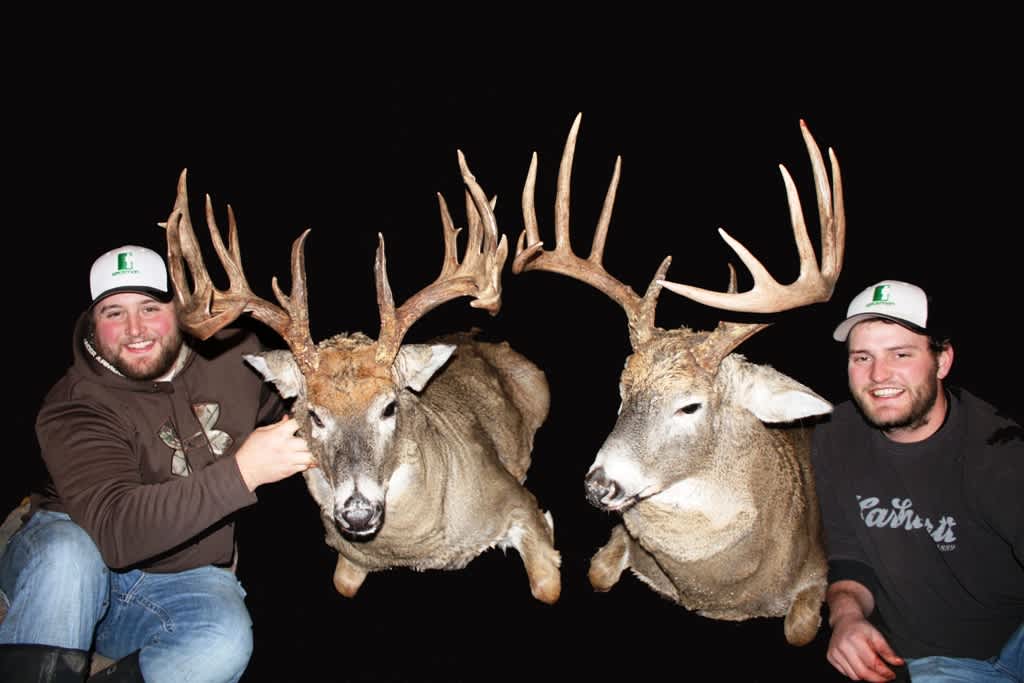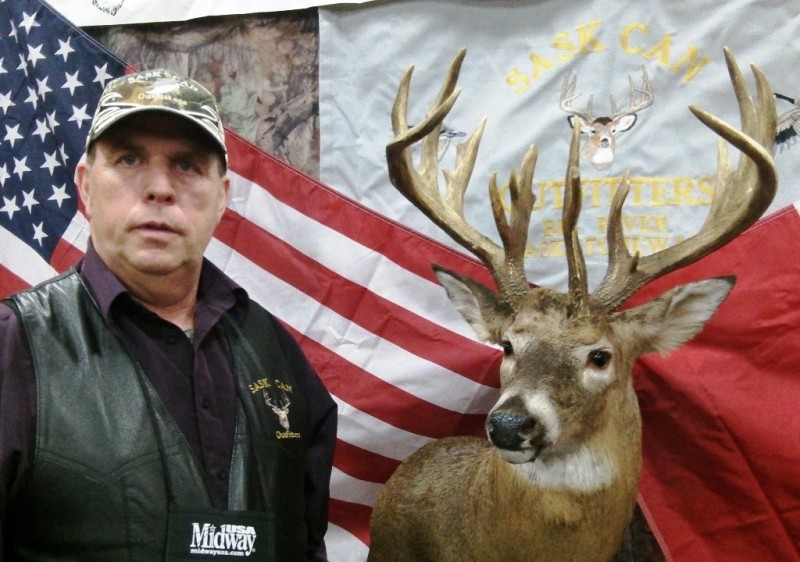SCI Highlight: Why Would an American Want to Hunt Canadian Whitetail?
Hunting with Joe Byers 02.06.15

Whitetail deer are the most populous big game animal in the United States, so why should a hunter travel to Canada to hunt them? The photo above helps make the case, but I tapped two outfitters to help explain the advantages of a Canadian whitetail safari.
Alberta
“Most stateside hunters have never hunted deer where there are caribou, elk, mule deer, grizzly bear, black bear, and wolves, lots of wolves,” said Ron Nemecheck of North River Outfitting. “Feel free to take a couple of those home with you,” he added with a laugh. “I hunt North Central Alberta and the chance to hunt in snow and really cold weather may be very different than conditions back home, especially if clients live in the Southern or Southwestern United States.”
The rifle season in Alberta covers the month of November, which allows US sportsmen to plan around their back-home seasons in the quest for a giant buck.
“The season opens November 1,” said Nemechek, “when the bucks are feeling the urge, but the does are disinterested. Inevitably, between November 8 and 10 the rut kicks in and the chase is on.”
Central Alberta hunts can be much like the Midwest, with its enormous grain and alfalfa fields. The bulk of Nemechek’s hunting occurs in the boreal forest farther north. In those areas, deer are larger in body size than those in more agricultural regions and possess one other important characteristic.
“If you see and pass on a buck in the bush, you may never see it again,” Nemechek said. “These deer often reach old age due to very limited hunting pressure, but their territories are large and secluded. Ten to 20 percent of our clients bag a buck of 170 or more and about that many again see or miss one that big. You have to be ready. The buck you see in the first five minutes of a weeklong booking may be just as big or bigger than one you’ll see until the hunt ends. I tell hunters to look for a number of long, tall points and heavy mass. A buck with those characteristics will score well.”
Saskatchewan

Alberta’s neighbor to the east is Canada’s other big buck powerhouse. Vern Hyllestad of Sask Can Outfitters was quick to tout the advantages of a Canadian whitetail hunt.
“The amount of hunters out in the woods with us and how many big deer they actually shoot says it all,” he says. “In all of Saskatchewan there may be 2,500 US hunters while back in the States, how many hunters will be out there after the same big deer? That’s why your chances are way greater for shooting a big deer with us.”
Hyllestad believes the amount of big deer in Saskatchewan is what keeps his clients coming back.
“We had a high count of 15 rack bucks one day and we have gotten as high as 25 in one day in good years. It’s phenomenal and keeps clients on the edge of their seat. You would almost think that it’s penned hunting, but its wild hunting and it blows a guy’s mind at how much depth there is. Our stands are three miles apart, not 300 yards apart. We have so much wild ground that a big buck may only show up once. Some of our hunts are on the border of national parks and buck may leave that sanctuary to check a doe and then quickly return.”
As in Alberta, deer hunters may see other game, but Sask Can concentrates on whitetail deer. “We try to do good job at one thing rather than a poor job at a bunch of things. You will see wolves, lynx, and things like that.” Hyllestad said.
Season flexibility is another plus for Saskatchewan.
“If the only time you can come is October 15,” Hyllestad continued, “I can run you archery, muzzleloader, or rifle due to the flexibility of my zones and the regulations we have.”

